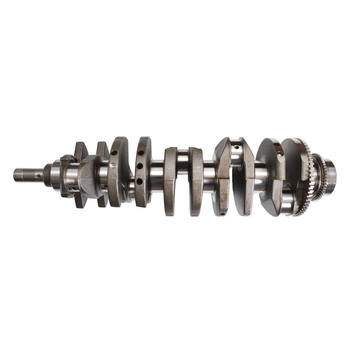Why Crankshaft Polishing Matters
Have you ever wondered how professional mechanics and engine builders consistently achieve exceptional performance and longevity from their engines? One often overlooked yet crucial factor is crankshaft polishing. By removing microscopic imperfections and creating a smoother surface, crankshaft polishing can significantly improve engine efficiency, power output, and durability.
The Importance of Surface Finish
To understand the benefits of crankshaft polishing, let's delve into the concept of surface finish. In my experience, many people underestimate the impact of surface finish on engine performance. The truth is, even tiny irregularities can disrupt oil flow, generate excessive heat, and cause premature wear. By reducing these imperfections through polishing, we can minimize friction, optimize oil distribution, and ultimately extend the life of our engines.
Choosing the Right Polishing Method
When it comes to crankshaft polishing, there are two primary methods: manual and automated. Both have their merits, and the best choice often depends on your specific needs and resources.
Manual Polishing
Manual polishing offers greater control and flexibility, allowing you to address problem areas more precisely. This approach is ideal for vintage or custom engines where preserving original components is essential. However, manual polishing requires considerable skill and patience, as well as specialized tools like abrasive stones and files.
Automated Polishing
Automated polishing machines provide faster, more consistent results than manual methods. These devices use rotating brushes or wheels to smooth the crankshaft surface quickly and efficiently. While automated polishing may not offer the same level of precision as manual techniques, it's an excellent option for high-volume applications or when time is of the essence.
Achieving the Optimal Surface Finish
Now that we've explored different polishing methods let's discuss how to achieve the optimal surface finish. Interestingly enough, the goal isn't to create a mirror-like shine but rather to strike a balance between smoothness and retaining enough texture for proper oil retention.
Inspecting and Measuring Your Results
Once you've completed the polishing process, it's crucial to inspect and measure your results to ensure they meet industry standards. A surface roughness tester can help you quantify the smoothness of the crankshaft surface, while a magnifying glass or borescope can reveal any remaining imperfections.
Putting It All Together
In conclusion, mastering the art and science of crankshaft polishing can significantly enhance engine performance and durability. By understanding the importance of surface finish, selecting the appropriate polishing method, and following best practices for achieving optimal results, you'll be well-equipped to tackle this essential aspect of automotive maintenance. So go ahead – give your engine the TLC it deserves and enjoy the benefits of a smoother, more efficient ride.




